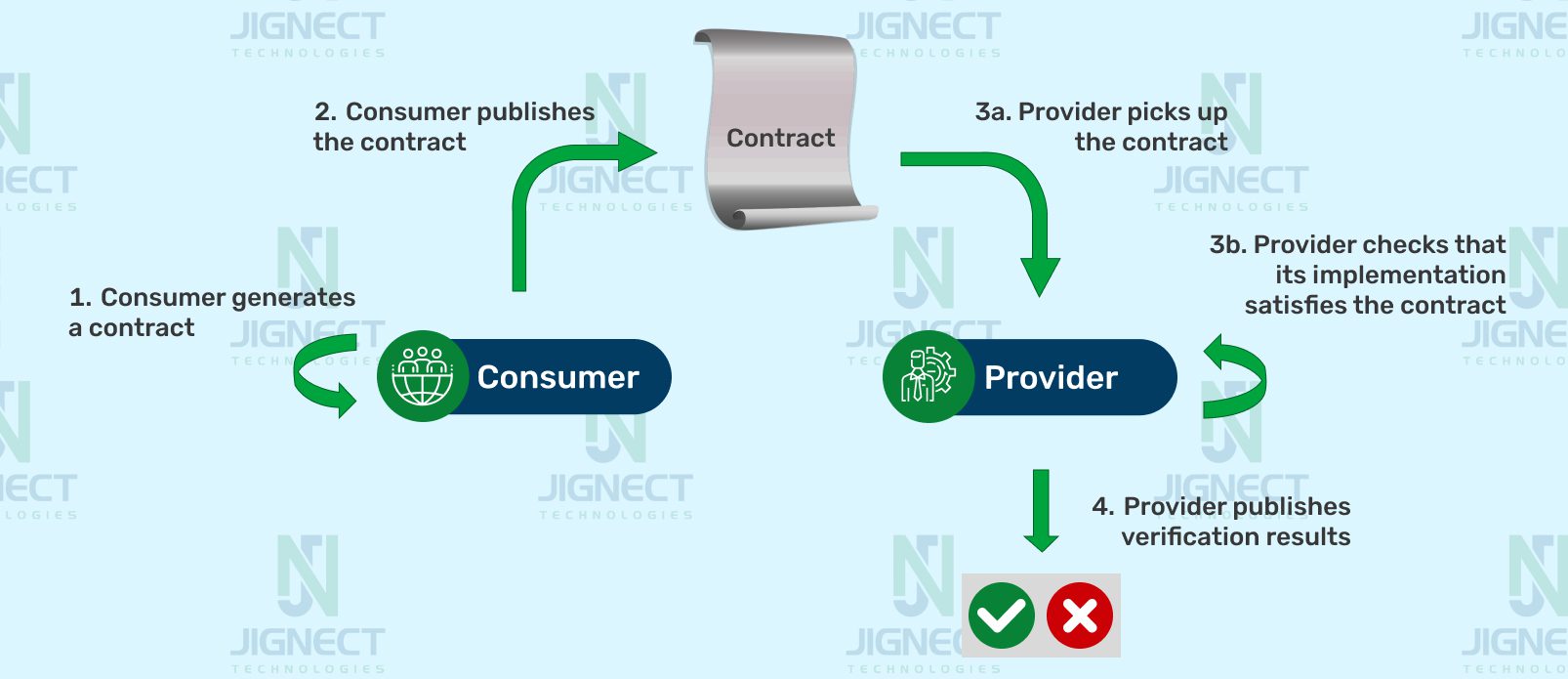What is Contract Testing?
Contract testing is a method of testing the interactions between different software components or services. Unlike traditional integration testing, which focuses on testing the behavior of the system as a whole, contract testing specifically targets the contracts or agreements between individual components. These contracts define the expected inputs, outputs, and behaviors of the components, ensuring that they work together seamlessly. Unlike traditional integration testing, which focuses on testing the integration points between components, contract testing places emphasis on the contracts themselves, enabling more targeted and efficient testing. To fully grasp the differences, understanding the nuances of contract testing vs integration testing is essential.
How does Contract Testing works?
Contract testing formalizes the expectations of consumer-provider pairs. There are two types of contract testing, differing in who creates the contract:
1. Consumer-driven contract testing:
In consumer-driven contract testing, the consumer creates the contract, outlining their expectations of the provider’s responses to specific requests. The provider’s role is to demonstrate compliance with the contract.
2. Provider-driven contract testing:
In provider-driven contract testing, the provider creates the contract as a specification of their services. Consumers use these contracts to ensure successful processing of the listed responses.
Both types have their own advantages and disadvantages. In this blog, we will focus on consumer-driven contract testing (CDCT), which is the most commonly used type in practice.
The complete CDCT cycle, verifying communication between consumer and provider, involves four steps:
1. The consumer creates a contract with their expectations about the provider’s behavior’s.
2. The consumer publishes the contract to the provider to pick up.
3. The provider picks up the contract and ensures their current implementation aligns with the consumer’s expectations.
4. The provider publishes the verification results to inform the consumer.

This process makes CDCT (contract testing in general) an asynchronous method of integration testing, the consumer and provider perform the steps they’re responsible for as part of their own build process, without having to rely on their connected components to be available at that time. All expectations that consumers have of their providers are written down in a contract, and each party performs their integration testing due diligence as part of their own build and release process.
Comparison Between Contract Testing & Integration Testing
Although often confused, contract testing and integration testing are two distinct types of testing with different purposes.
Contract testing focuses on verifying that interactions between services or APIs are consistent with the predefined contract. It ensures that each service or API adheres to the agreed-upon contract and that changes to one service do not break the functionality of other services that rely on it. Contract testing can be performed in parallel across services, as it takes place independently of other microservices or components. It also uses mocked data, making issue resolution easier. For efficient contract testing, utilizing various contract testing tools can greatly enhance the process.
Integration testing, on the other hand, focuses on verifying that the individual components of a system work together correctly as a whole. It tests the integration points between different modules, components, or services, and the interactions between them.
Contract Testing Vs. Integration Testing
| Feature/Capability | Contract Testing | Integration Testing |
| Scope | Focuses on the interactions and contracts between microservices or components. | Tests the interaction and behavior of multiple components or systems as a whole. |
| Timing | Done in parallel with the development of each microservice or component. | Usually performed after the development of individual components and before the final system testing. |
| Purpose | Ensures that each microservice or component behaves as expected and meets the agreed-upon contracts with other microservices or components. | Validates the integration and interaction of multiple components or systems as a whole. |
| Dependency | Independent of other microservices or components. | Dependent on the availability of other components or systems. |
| Test Data | Uses mocked or stubbed data to simulate interactions between microservices or components. | Uses real data to test the interaction and behavior of multiple components or systems as a whole. |
| Test Environment | Can be executed in isolation without the need for a complex environment setup. | Requires a complex environment setup that mimics the production environment. |
| Coverage | Covers the interfaces and contracts between microservices or components. | Covers the integration and interaction of multiple components or systems as a whole. |
| Complexity | Relatively simpler than integration testing. | More complex than contract testing due to the need for a larger environment setup and interactions between multiple components. |
| Debugging | Easier to debug due to the smaller scope and the use of mocked or stubbed data. | More challenging to debug due to the larger scope and the use of real data. |
Contract Testing Use Cases?
Contract testing is a valuable methodology to ensure the reliability and compatibility of microservices and APIs. However, it is not a good fit for all testing requirements. Here are some common use cases where contract testing can be helpful:
1. Microservices testing:
Contract testing can help to ensure that each service conforms to the agreed-upon API contracts. This can help prevent issues and bugs that result from architectural complexity, without having to wait for slow results from end-to-end tests.
2. Third-party integrations:
When integrating with third-party services or APIs, contract testing can help ensure that the code conforms the requirements and behavior of the external service. This can help prevent compatibility issues and check that the code is reliable and secure.
3. Versioning:
When introducing new versions of an API or service, contract testing can help to ensure that the new version is backwards-compatible with existing clients. This helps to prevent issues such as downtime or data loss when upgrading to a new version.
4. New projects onboarding:
When developers start working on a new project, contracts help them get up to speed quickly. Contracts provide OpenAPI specifications, concise and accessible explanations of the service’s capabilities, and its expected APIs. By using contract tests, developers can understand the requests and responses, which makes it easier to understand the code.
5. Checking backwards compatibility:
Using contracts, the backwards-compatibility checking process is much easier for developers. With contracts, developers can easily search the service repository for the past versions, and test the compatibility of the new feature with each of these versions. This reduces the need for manual testing without compromising the overall stability of the system.
Bottom Line
Contract testing offers a powerful way to ensure the reliability and integration of modern software systems. By focusing on the contracts and agreements between services, teams can proactively identify and address integration issues, leading to more robust and resilient applications. Stay tuned for the upcoming blog on Implementation of Contact testing with Postman.
Witness how our meticulous approach and cutting-edge solutions elevated quality and performance to new heights. Begin your journey into the world of software testing excellence. To know more refer to Tools & Technologies & QA Services.
If you would like to learn more about the awesome services we provide, be sure to reach out.
Happy Testing 🙂




